Jaw Shaping in Panama
Search and Compare the Best Clinics and Doctors at the Lowest Prices for Jaw Shaping in Panama

Find the best clinics for Jaw Shaping in Panama
No clinics available
Malaysia offers the best prices Worldwide
Price: $ 672

- Home
- Panama
Compare Before & After Photos of _procedure_photos.phpJaw Shaping
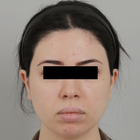
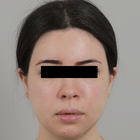
Front view


Front view
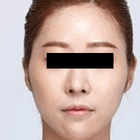
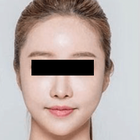
Front view
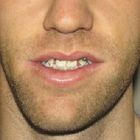

Front view
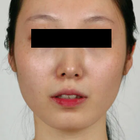
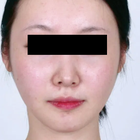
Front view
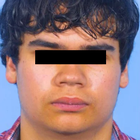
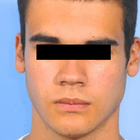
Front view

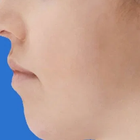
Full-side view
WHY US?
At Medijump, we're making medical easy. You can search, compare, discuss, and book your medical all in one place. We open the door to the best medical providers worldwide, saving you time and energy along the way, and it's all for FREE, no hidden fees, and no price markups guaranteed. So what are you waiting for?

Free

Best Price

Widest Selection

Risk-Free
What you need to know about Jaw Shaping in Panama
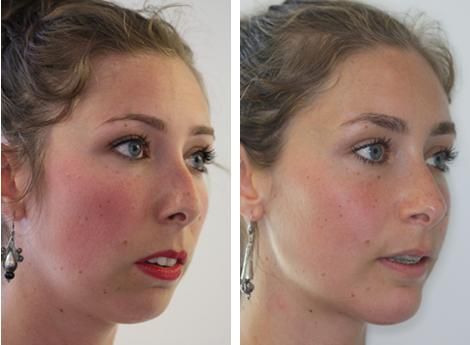
Also known as Mandibular Angle Reduction, V Line Surgery or Jawline Surgery, Jaw Shaping Surgery is performed with the purpose of narrowing the lower part of the face, with particular emphasis on the mandible (lower jaw) and the muscular attachments.
A wide jaw angle can be caused by enlarged muscle, bone, or a combination of the two. A prominent jaw angle or square jaw is considered a masculine trait, particularly in Asian countries. Therefore, many people opt for surgical correction to get their desired look. The surgery can shorten an overly long jaw and change a square-shaped face to an oval shape. Some people with temporomandibular joint (TMJ) disorders, uneven jaws, or jaws that causes pain when chewing might also undergo this surgery to correct pain.
There are several critical elements involved in the surgery, including the angles of the jaw, the body of the mandible, and the shape of the chin. While the procedure is typically performed on women with a square jawline who want a more feminine look, it can be done on both men and women. However, this procedure may not work for people who want to feminize a male’s face since males usually have a taller and longer face. Therefore, a V Line Surgery would only make a face look more elongated.
What does a Jaw Shaping Procedure Involve?
Various developmental, congenital, or some rare disorders such as acromegaly can cause enlarged mandibles, which can be corrected by Jawline Surgery. It is ideal for those with overly square or U-shaped jawline, overly manly jaw shape, bloated cheeks, and double chin. If you are considering V line surgery, you will need to be in a good state of physical and mental health.
Prior to the surgery, you will be examined by X-rays and 3D CT scans. Your surgeon will analyze and evaluate the overall structure of your jaw to create a plan to produce the desired result. You will also need to undergo medical tests such as ECGs to ensure that you don’t have a condition that may put you in danger or compromise the success of the surgery.
Surgery is performed under general anesthetic through tracheal intubation and leaves minimal scarring. You will need to fast for 8 hours before the surgery. Oscillating saws are used to reshape the jaw. The surgery can be performed inside the mouth (intraoral) or from outside the mouth (postauricular). The intraoral approach is the most widely used method. With this approach, an incision is made between the gum and the back of the cheek next to the jaw. Then, the jawline is carved out into their desired shape. A portion of the masseter muscle is shaved off, and the outer portion of the bone is chipped off. This approach is best for patients who aim to narrow their frontal view since the change is subtle and natural.
If the patient wants to change the appearance of the jaw angle from a side view, the overall contour of the bone will need to be changed. This means that the patient needs a full-thickness bone removal. Although it can be done through the intraoral approach, the surgeon’s view during this approach is very limited, which can decrease the precision of the procedure. Therefore, the best approach is from outside of the mouth or postauricular. To get direct access to the bone, the surgeon makes an incision hidden around the ear. This approach can remove a more substantial amount of bone. The recovery time using this approach is also much shorter than the intraoral approach since the swelling stays confined to the neck area.
How Long Should I Stay in Panama for a Jaw Shaping Procedure?
The typical length of time for Jaw Shaping is usually around 2 hours. Nevertheless, you have to stay in the hospital for around one to two days for initial recovery where you will be monitored to make sure everything is fine. After being discharged, plan to stay in the Panama for 10 to 14 days or until the surgeon says you can go home. The stitches are generally removed within two weeks after surgery, though this may vary from patient to patient.
What's the Recovery Time for Jaw Shaping Procedures in Panama?
Immediately after the surgery, you will need to wear a facial mask that presses tightly against the skin around the jaw to keep the post-surgery swelling down. Also, you will not be allowed to eat foods that require chewing because it will delay the recovery and can cause bleeding. If you undergo the intraoral approach, your food intake will be limited for a considerable length of time. You may feel some swelling, numbness, and discomfort around the incision for several days, but the surgeon will prescribe medications to help with the pain.
The recovery period can be different for each individual; some people may be able to go back to their regular routines after seven to ten days, but others may need more time to fully recover. Avoid doing any vigorous activity that increases your blood pressure for several weeks, such as jogging and other exercises. Most of the visible signs, such as swelling and bruising, should disappear within a few weeks. Symptoms such as hematoma and infection are common, and will usually subside within three to six months post-surgery.
What sort of Aftercare is Required for Jaw Shaping Procedures in Panama?
You must follow your surgeon aftercare instructions strictly to accelerate your recovery and minimalize possible complications. The instruction will likely include the following recommendations:
- Food intake. You may need to consume a liquid diet for a week after surgery as drinking your food is less painful and prevents trauma to the jaw area. You should be able to consume hard foods within one month.
- Oral hygiene. An antibacterial mouth rinse will keep your mouth and incision area clean, which will decrease the possibility of infection.
- Avoid tobacco and alcohol. Smoking and drinking alcohol should be avoided for a while.
- Keep the head elevated. You should keep your head elevated even when you are sleeping as it is the key to reduce swelling.
- Compression bandage. You are recommended to wear a compression bandage at all times for the first three days and while sleeping for the first week or two.
- Avoid strenuous activity. Do not do any heavy lifting or exercise for at least a month. However, do walk around and practice some gentle movement.
- Attend follow up appointments. The surgeon will check your progress to avoid any complications.
What's the Success Rate of Jaw Shaping Procedures in Panama?
Jaw shaping surgery is a safe procedure when performed by a trained surgeon. Around 94% of patients express their satisfaction with this procedure. However, it is important to have realistic expectations. You should also be aware of the possible risks that this surgery may cause. These risks include infection, asymmetry, seroma, deep vein thrombosis, pulmonary embolism, and hematoma. Partial numbness of the jaw can also happen due to nerve damage.
Are there Alternatives to Jaw Shaping Procedures in Panama?
If you wish to reshape your jaw but do not want to undergo surgery, there are non-invasive options available. The most popular alternatives are Botox and Dysport, which can effectively contour the jaw by relaxing the appearance of a square jaw. This procedure shrinks the masseter muscle by weakening it. These injectable can also be used to correct facial asymmetry around the jawline area. Since they are non-invasive, you can return to your daily activates right away and they offer a subtler shift in your appearance. However, these techniques are limited to cases in which the masseter is enlarged and may not work as well as V Line Surgery.
Whilst the information presented here has been accurately sourced and verified by a medical professional for its accuracy, it is still advised to consult with your doctor before pursuing a medical treatment at one of the listed medical providers
No Time?
Tell us what you're looking for and we'll reachout to the top clinics all at once
Enquire Now

Popular Procedures in Panama
Prices Start From $70

Prices Start From $28

Prices Start From $1,945

Prices Start From $275

Recommended Medical Centers in Panama for procedures similar to Jaw Shaping

- Interpreter services
- Translation service
- Religious facilities
- Medical records transfer
- Medical travel insurance
- Health insurance coordination
- TV in the room
- Safe in the room
- Phone in the room
- Private rooms for patients available
Jaw Shaping in and around Panama
Introduction
Situated as a transcontinental entity, the Republic of Panama straddles the geographic crossroads of Central and South America. The inception of the Panama Canal in 1914 propelled this country into an integral position as a nexus between the Caribbean Sea and the Pacific Ocean. Those who are drawn to visit this radiant country find themselves ensnared in a mesmerizing display of cerulean seas, diverse fauna, deserted islands, bountiful coffee farms, and awe-inspiring rainforests.
The Republic of Panama unites the corners of the world, bridging the two American continents as a vibrant transcontinental nation. The construction of the Panama Canal in 1914 marked a turning point, positioning the nation as a crucial crossroad - connecting the vast expanse of Caribbean waters with the Pacific. The travelers who venture into this country discover an array of rewards awaiting them. The breathtaking beauty of sparkling blue waters, a plethora of enthralling wildlife, desolate islands that evoke an air of tranquility, sprawling coffee plantations, and the awe-striking charm of lush rainforests contribute to the diverse and enticing experiences that Panama has to offer.
Over the past several years, the Republic of Panama is steadily gaining renown as a preferred medical tourism hotspot for myriad individuals across Europe and the United States. The medical professionals operating within the country receive their robust education and accreditation from the United States, thus ensuring their expertise extends to the vanguard of their respective fields. The blend of these proficient doctors and superb medical infrastructure, combined with reasonable pricing on a wide range of medical practices, contributes to Panama's appeal for healthcare needs. Whether one seeks remedial treatments or desires elective cosmetic surgery, there are an ample array of high-quality, cost-effective services available in this picturesque country.
In the recent panorama, Panama has noticed a swift surge in its recognition as a prime choice for medical tourism, attracting numerous Europeans and Americans to its shores. Professionally trained and certified in the United States, the doctors in Panama stand at the forefront of their respective medical fields. Contributing to its desirability as a medical tourism hub is the high-quality care provided by these adept medical practitioners, alongside state-of-the-art healthcare facilities. The affordability of medical procedures in Panama further heightens its appeal. From treatments aimed at correcting medical conditions to elective cosmetic surgeries, the striking beauty of Panama, coupled with its comprehensive and affordable healthcare solutions, makes it an ideal medical destination for individuals worldwide.
Popular Cities and Regions in Panama
Known as the most cosmopolitan capital within the region of Central America, Panama City opens the door to a multitude of tropical getaways while donning the hat of a bustling metropolis. Serving as a focal point for trade and immigration within the region, Panama City represents a vibrant blend of diverse cultures; a veritable melting pot where different backgrounds meet and meld.
Being the epitome of cosmopolitan magnificence in Central America, Panama City beams as the gateway to a spectrum of tropical retreats and simultaneously thrives as a bustling urban settlement. It stands as a central hotspot for regional trade and immigration practices, thereby birthing a profusion of cultures. This city, with its diverse cultural influences, serves as a sophisticated melting pot, crafting a harmonious blend of a myriad of cultures.
Some of the more popular tourist attractions are Teatro Nacional, Panamá Viejo, Donde José, and Parque Natural Metropolitano. Although the capital attracts thousands of tourists each year, the most popular destination is Bocas del Toro. Combining a laid-back Caribbean vibe with the incredible natural setting of forests, jungles, and mangrove, this seaside town is where adventure and relaxation meet. Surfing and snorkeling are extremely popular in this town. However, the real talking point is relaxing in a secluded cove which can only be reached by water taxis.
Transport in Panama
The primary international portal into Panama is the Tocumen International Airport, serving as a critical regional hub for flights moving in and out of The Caribbean, as well as North, South, and Central America. Additionally, it accommodates flights from select cities across Asia and Europe. For intra-country travel, domestic flights are the quickest mode of transport; however, the speed comes with a higher price tag.
Road travel presents a more economical alternative, with buses being the most widely used and cost-effective means of transportation across the country. Within the confines of major cities, taxis are readily available for residents and tourists alike.
Tocumen International Airport is the premier international aerial gateway into Panama. This airport stands as a regional transport hub, connecting Panama with destinations across the Caribbean, North, South, and Central America — even heralding flights from certain European and Asian cities. To journey within Panama, domestic flights offer the quickest, albeit pricier, option. For those prioritizing affordability over speed, buses provide a popular and budget-friendly choice.
Further adding to the transportation options in Panama is the accessibility of taxi services. For those traversing within the major urban areas of the country, taxi services make intra-city travel a breeze. These easily available taxis contribute significantly to the efficiency of short distance commutes.
Additionally, getting around within the key city areas in this country is seamless thanks to the taxi services. For intra-city commutes in Panama's principal urban centers, taxis stand as a thoroughly accessible choice for transportation, simplifying movement within the cityscape.
Visas in Panama
Panama allows citizens of most countries, including all EU citizens and Americans, to visit the country without a visa for 180 days. Some other countries, such as China and the Philippines, need a visa to visit the country. All visitors need to hold a passport valid for at least 6 months.
-
Citizens of over 100 countries, including all EU nations and the United States, can visit Panama without a visa for up to 180 days.
-
Nationals of countries not included in the visa-exemption list need to apply for a visa before traveling to Panama.
-
All visitors must have a valid passport with at least six months remaining validity from the date of entry.
-
Proof of onward travel may be requested upon arrival.
Weather in Panama
Situated comfortably within the tropics, Panama's climate is characterized by distinctive wet and dry seasonal variations. Spanning from mid-March through to December, the wet season tends to bring rainfall every alternate day. However, the showers are typically brief and they mainly occur during afternoon hours, but this season also tends to be quite humid. On the other hand, the dry season extends from December until March. Throughout this time frame, the likelihood of witnessing rainfall dramatically decreases, resulting in overall drier conditions.
Given its tropical location, Panama experiences two distinct seasons: the wet and the dry. Commencing in mid-March and continuing until December, the wet season brings periodic rainfall, which typically occurs in short, intense bursts during the afternoon. However, tourists should remember that humidity levels can peak during this time. Conversely, the dry season, which stretches from December through March, ushers in a period of minimal rainfall, offering a drier climate.
Additional Info
- Local Currency: The official currency is the balboa. The rate of exchange has always been tied to the US dollar. 1 USD equals 1 PAB.
- Money & Payments: ATMs are readily available in most cities and towns. Credit cards are accepted at upscale hotels and restaurants. Tipping is customary.
- Local Language: Spanish is the official language of Panama, as well as the most widely spoken. English is one of the most popular foreign languages.
- Local Culture and Religion: The main religion in Panama is Christianity. However, Buddhism, Judaism, and other religions are also practiced.
- Public Holidays: Panama celebrates Mardi Gras, Los Santos Uprising Day, Independence Day, and Christmas Day among others.
Popular Searches
- Plastic Surgery in Thailand
- Dental Implants in Thailand
- Hair Transplant in Thailand
- Breast Augmentation Thailand
- Gastric Sleeve in Thailand
- Gender Reassignment Surgery in Thailand
- Laser Hair Removal in Bangkok
- Botox in Bangkok
- Dermatology in Bangkok
- Breast Augmentation in Bangkok
- Coolsculpting in Bangkok
- Veneers in Turkey
- Hair Transplant in Turkey
- Rhinoplasty in Turkey
- Stem Cell Therapy in Mexico
- Rhinoplasty in Mexico
- Liposuction in Mexico
- Coolsculpting in Tijuana
- Rhinoplasty in Korea
- Scar Removal in Korea
- Gastric Sleeve in Turkey
- Bone Marrow Transplant in India
- Invisalign in Malaysia
- Plastic Surgery in the Dominican Republic
- Tummy Tuck in the Dominican Republic
- Plastic and Cosmetic Surgery in Poland
- Rhinoplasty in Poland
- Hair Implant in Poland
- Dental Implants in Poland
- IVF in Turkey